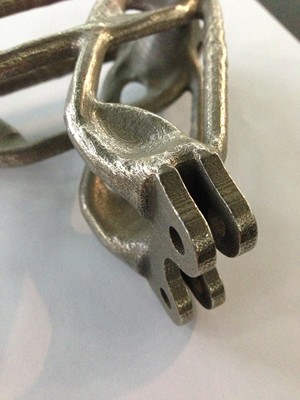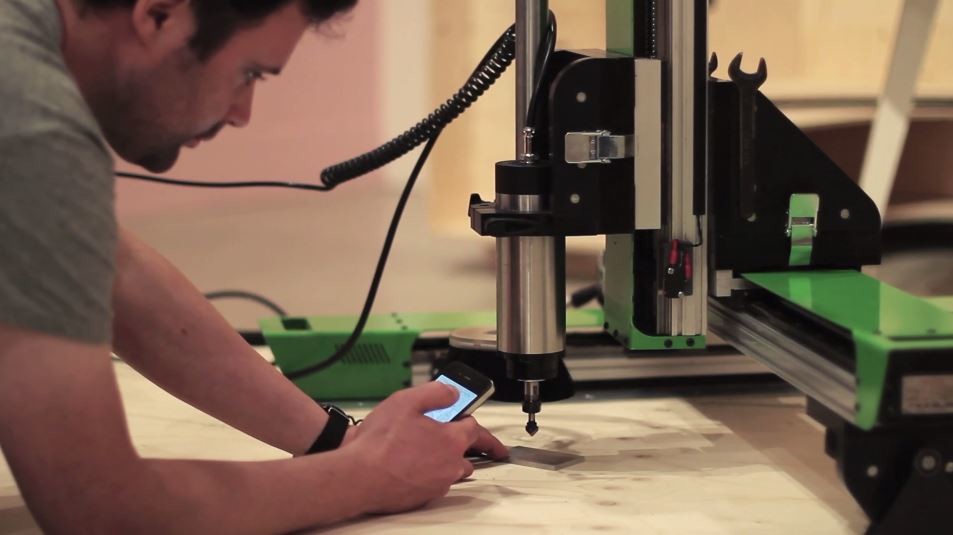As the ‘The Future Is Here’ digital manufacturing exhibition hits our shores, we take a closer look at some potentially transformative technology.
The Future Is Here, an Alec Newson exhibition from London’s Design Museum, is being hosted and co-curated by Victoria’s RMIT University Design Hub from 29 August to 11 October this year.
The exhibition focuses on the idea that we are in the midst of a transformation that is changing the way we design, make and consume the objects we depend on.
Digital manufacturing is a key theme and the exhibition showcases its resonance in the fields of 3D printing, mobile- computer controlled cutting machines (CNC routers), the recycling of electronics, digitally fabricated homes and heavy duty corrugated cardboard.
Here’s a quick exploration into major digital manufacturing technologies.
3D printing:
3d printers use a variety of methods and technology to assemble physical versions of digital objects, usually by constructing a thin layer of an object at a time and then building another layer of the same object immediately on top of the prior one.
Typical materials used are alumide, steel, glass, thermoplastics (especially nylon), and certain ceramics, however most machines cannot print more than one material at a time.
In the past year alone we have reported news that a Chinese company had printed 10 houses in a day using recycled materials, that engineers have 3D printed prototypes of steel nodes and that a special 3D-printing robot can draw intricate metal structures on almost any surface.
While such stories probably sit at the gimmicky end of the spectrum, the technology is expected to have widespread application.
Designer Ron Arad was interviewed about his experiences with 3D printing prior to the original The Future Is Here exhibition at London’s Design Museum. He, like a lot of designers, regards the process as groundbreaking but also warns of its misuse.

Above: a Chines company manufactured 10 completely 3d printed homes in under 24 hours. Image: 3ders.org.
Below: A Ron Arad 3D printed building model.

"I discovered [3D printing] when it was called rapid prototyping... and I thought well 'here's another way of making things'," said Arad.
“Predictably it has become commonplace, like every good idea.”
“But if you want an analogy it is like early synthesisers [which] meant you could produce music in a different way…but after a while you just wanted to go back to the music.”
“Synthesisers were the abused and after a while so was [3D printing] technology.”
But Arad isn’t writing the technology off completely and sees the technology as the future of most industries.
“It is amazing what we can do, what we will do and what we don’t know people will do with it,” he said.
“Maybe in the future the plumber will have a machine in his van and print the S pipe according to his needs in the van."
Below: The latest metal and plastic prints. Images: Fields of Activity

Onsite CNC routing, digitally manufactured homes and furniture
Pre-fab homes and CNC routing aren’t new to the industry, and factory fabrication of homes and buildings is seeing consistent use in Australia. Just in May we reported that a nine-storey Melbourne apartment building had been manufactured offsite before being constructed onsite in just five days.
But companies like the UK’s Facit Homes and Grow CNC are now taking this process of digital manufacturing direct to the construction site to further streamline the process.
Facit Homes is an architecture, design, manufacturing and environmental engineering company that design and digitally manufacture homes.
Facit Homes director, Buce Bell says by having control of the project from design to finish enables him to streamline and add detail insitu.
“It gives us real control over our projects so it means that we can guarantee the quality and performance, but also as designers you get to control the details.”
“By combining all the skills and trades in one company, so your contractor, designer and specialist consultants, we make a much more streamlined product for the client, but also a better end product,” Bell said.
“We make it’s much more integrated and much less fragmented, much in the same way that companies who manufacture products do. “
Where Facit Homes and Grow CNC differ from other companies is that they have now mobilised the process of digital manufacturing. Facit Homes deliver their CNC routing machine to the construction site in a container and digitally manufacture their project’s structures onsite. The CNC router that Grow CNC use is even more mobile; it is the world’s first portable and modular CNC router and can transported site to site by one person.
Micheal Warren, Grow CNC founder had been using CNC machines for years but couldn’t understand why anyone hadn’t bridged the gap between handheld routers and expensive stationary machines.

Warren’s machine is controlled by an interface on his Iphone and it differs from other machines in that its cutting tool mounts directly to the material it’s cutting rather than traditional machines which clamp the material to be routed to a stationary bed.
It benefits quick and easy construction and Warren says he has constructed everything from circuit boards to furniture.


